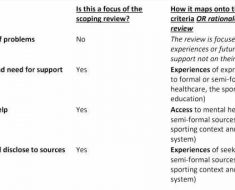A recent study published in Molecular Cell reviewed the control of gene expression by N6-methyladenosine (m6A), a modified nucleotide in the messenger ribonucleic acid (mRNA).

Background
The central focus of exploring regulatory elements in mRNA has been on sequence-specific RNA-binding proteins (RBPs) that influence mRNA stability, translation, and splicing. On the other hand, some regulatory elements are encoded by chemical modifications of mRNA nucleotides. m6A is the most abundant modified mRNA nucleotide, also found in small nuclear RNA (snRNA) and ribosomal RNA (rRNA).
Identified as an mRNA component in the 1970s, the interest in studying pathological and functional features of m6A was sparked by one study in Arabidopsis, where depletion of an m6A-synthesizing protein homolog resulted in developmental defects. Over the past decade, several breakthroughs have been made regarding the mechanisms and functions of m6A. In the present review, researchers discussed the current perspectives of m6A and the outstanding questions on its regulatory pathway.
Dynamics of m6A
Mapping analyses revealed that gene architecture, i.e., the distribution and length of introns and exons in a gene, is linked to mRNA methylation patterns. One study noted disproportionate enrichment of mRNA methylation in regions of transcripts corresponding to long internal exons. Besides, m6A enrichment is also observed near the stop codon.
Although the stop codon is unlikely to trigger the formation of m6A in the nucleus because they are recognized only by ribosomes in the cytosol, this (feature) might be due to the terminal exon-exon junction, usually near the termination codon. While m6A is described as a dynamic modification, evidence for its dynamics is limited. A potential caveat for this might be the different interpretations of the term ‘dynamic.’
For instance, dynamic might mean the ability of m6A to appear on a transcript, disappear, reappear, and be removed multiple times in the lifespan of a single mRNA molecule. This is unlikely given that methylation occurs once and demethylation if it occurs, would be restricted to the nucleus. m6A acquires a pattern in the nucleus, which is retained throughout the subsequent life in the cytosol. Thus, m6A is not dynamic in this respect.
Nuclear and cytoplasmic m6A readers
The modified nucleotide exerts its effects by binding to reader proteins such as the YTH domain containing 1 (YTHDC1 or DC1) in the nucleus, and YTH domain-containing family protein 1 (YTHDF1 or DF1), YTHDF2 (DF2), and YTHDF3 (DF3) in the cytosol. YTHDF1, 2, and 3 are paralogs with high amino acid identity and mainly contain low-complexity domain regions. The presence of abundant low-complexity domain sequences in YTHDF1, 2, and 3 proteins is consistent with these proteins’ functioning in intracellular condensates.
Recent reports indicated that the DF proteins are enriched in stress granules, processing (P)-bodies, and other condensates and that they undergo phase separation upon interaction with poly-methylated RNAs. Hence, the functions and regulation of YTHDF are linked to condensate biology. Until recently, each DF protein was thought to bind unique subsets of m6A sites. However, the present study’s authors previously demonstrated that the DF paralogs bind to all m6A sites equivalently.
Redundancy in the functions of DF paralogs
As with the functions of DF paralogs, the prevailing notion was that DF2 promotes mRNA degradation while DF1 and 3 enhance translation. More recently, DF protein functions have been fundamentally revised. Mounting evidence indicated that DF1 does not enhance m6A RNA translation and that DF paralogs function redundantly, leading to mRNA degradation.
Notably, despite the functional redundancy, the DF paralogs are not entirely interchangeable and show differences in the low-complexity domains. These differences could lead to differential phase separation behavior and regulation by post-translational (PTM) modifications.
m6A and epigenetic regulation
DC1 regulates the functions of m6A in the nucleus, and approximately all nuclear RNA processing events are linked to DC1 and m6A, including polyadenylation site selection, splicing, nuclear RNA degradation, nuclear export, and epigenetic regulation. Non-coding RNAs (ncRNAs) constitute one of the main DC1 targets, and studies have observed that depleted DC1 levels could impact nuclear architecture and P-bodies.
It has been shown that DF proteins promoted m6A-mediated mRNA degradation proportional to the number of m6A sites in the transcript. Further, DC1 might also be involved in the regulation of epigenetic silencing. DC1-bound m6A sites on X inactive specific transcript (XIST) promotes gene silencing.
DC1 has been implicated in the silencing of retrotransposons and endogenous retroviruses. Contrastingly, gene activation has also been observed with DC1 and m6A. DC1 was shown to promote demethylation of histone 3 lysine 9 (H3K9) and enhance the expression of about 30% of m6A-containing transcripts. Still, it is unclear how DC1 promotes or suppresses H3K9 methylation.
Concluding remark
Although it is understood that m6A predominantly mediates the degradation of m6A-marked mRNAs, the nuclear effects of m6A, particularly in the light of contradicting findings regarding epigenetic regulation and m6A, require more research in the future.
- Murakami S, Jaffrey SR. Hidden codes in mRNA: Control of gene expression by m6A. Molecular Cell. doi: 10.1016/j.molcel.2022.05.029 https://www.cell.com/molecular-cell/fulltext/S1097-2765(22)00496-8?rss=yes
Posted in: Molecular & Structural Biology | Genomics | Life Sciences News
Tags: Amino Acid, Cell, Codon, Exon, Exons, Gene, Gene Expression, Gene Silencing, Intracellular, Introns, Lysine, Molecule, Nucleotide, Nucleotides, Protein, Research, Ribonucleic Acid, RNA, Splicing, Stress, Translation

Written by
Tarun Sai Lomte
Tarun is a writer based in Hyderabad, India. He has a Master’s degree in Biotechnology from the University of Hyderabad and is enthusiastic about scientific research. He enjoys reading research papers and literature reviews and is passionate about writing.
Source: Read Full Article





